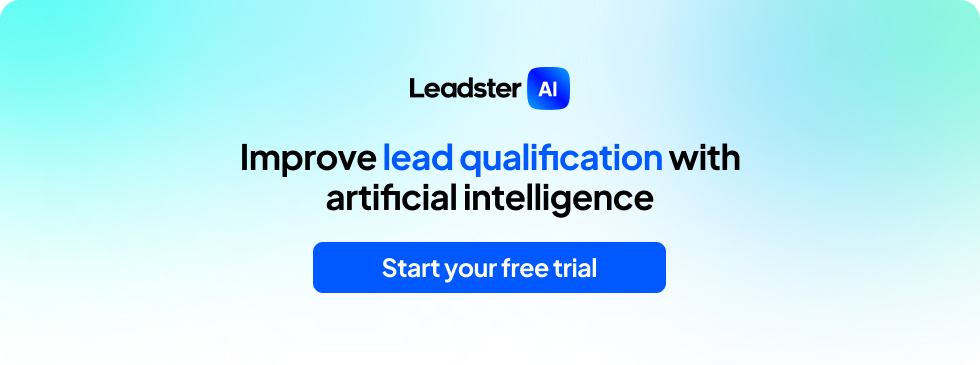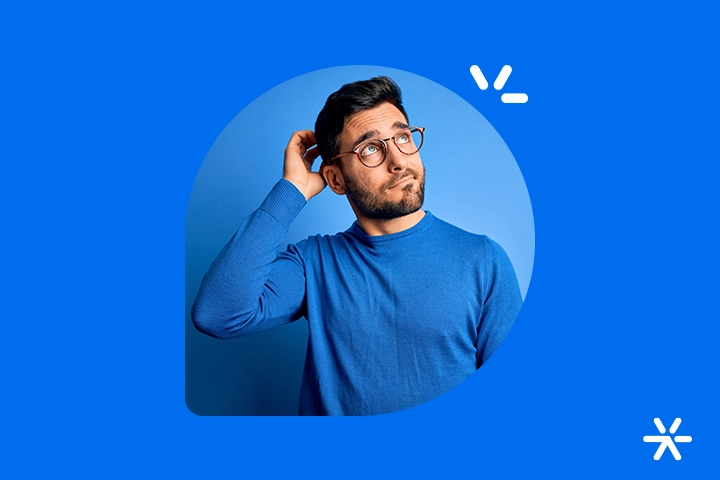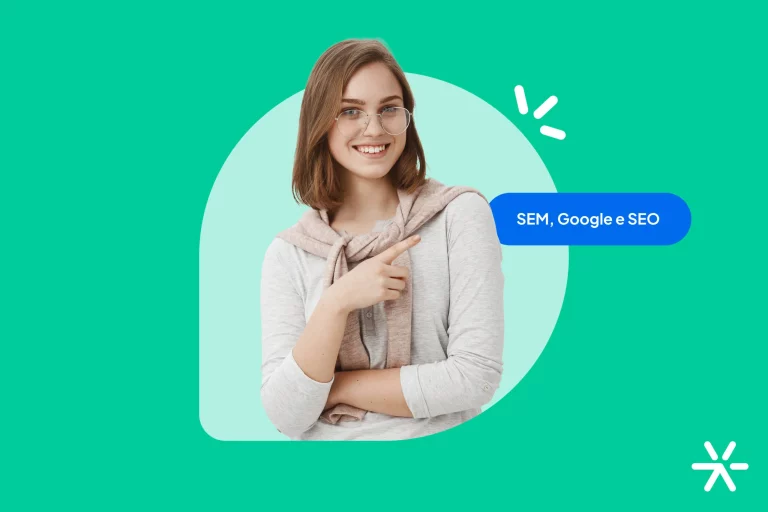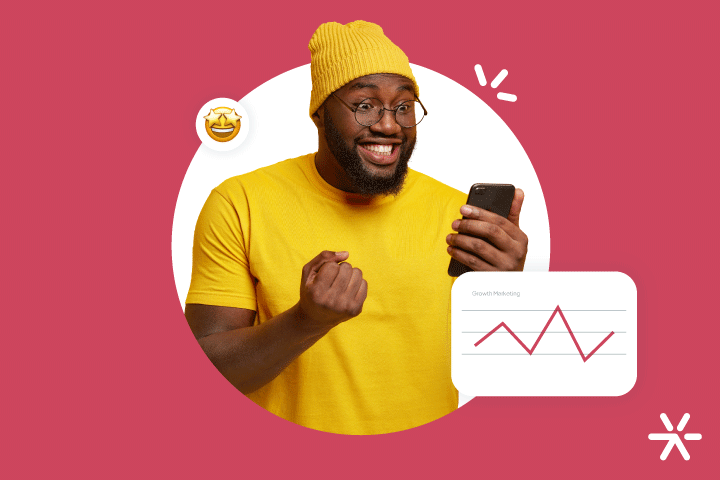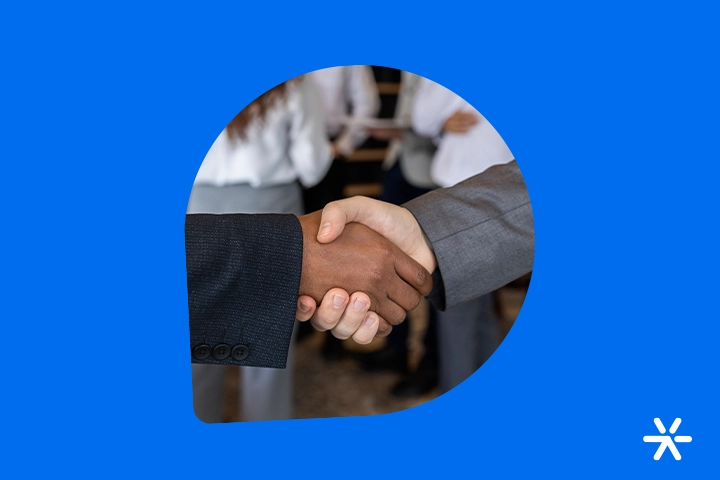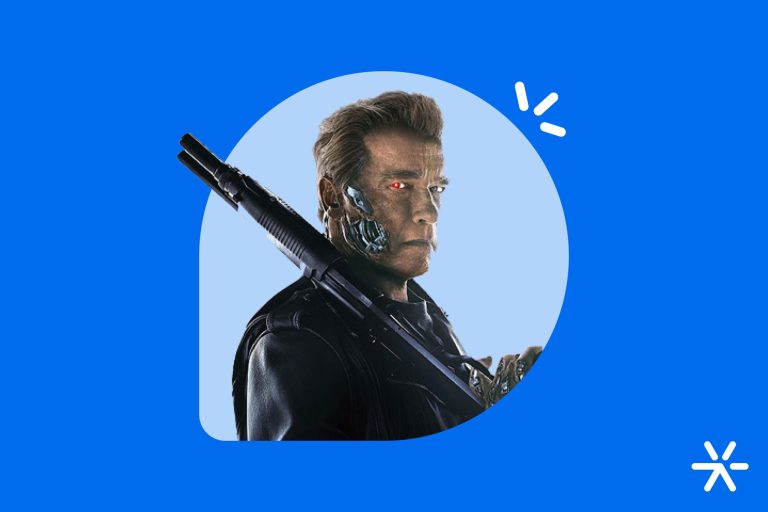What Is the Messy Middle? See How it Changes Everything in B2B
The B2B landscape has been changing a lot — and for many reasons.
Companies are always evolving. B2B efforts have always been driven by cycles tied to various factors such as the country’s internal politics, overall economic conditions, production and logistics realities, etc.
At certain times, the B2B buying journey becomes well-defined and receptive. Selling gets easier, and systematization becomes simpler to achieve.
At other times, companies prefer to outsource less, spend less, and develop their own solutions to tackle their challenges.
We’re not in either of those phases right now. We are entering what’s known as the “messy middle” phase of B2B marketing.
But what exactly is this? What are the impacts on marketing strategies? And how can we succeed (or at least stop the decline) during such a strategic moment?
That’s what we’ll discover in this article. Shall we?
Funnel Disruptions That Highlight the Messy Middle
Exploring the possibilities of the Marketing Funnel has always been part of our job as marketers. And this Funnel has always been perceived as a well-structured model.
In fact, so structured that it was often viewed as a completely linear process, consisting of:
- Top of the Funnel (TOFU): a space to generate awareness and convert website visitors into leads, mostly through content across various channels, with a focus on organic traffic;
- Middle of the Funnel (MOFU): traditionally used for lead nurturing, with lead scoring actions via email marketing;
- Bottom of the Funnel (BOFU): used to close the sale after the lead has reached the scoring threshold.
We’ve long argued that this process is not linear — people can enter and interact with your brand at any stage.
But that’s not the non-linearity we’re talking about in this article.
The truth is that today’s consumer — especially in B2B — is breaking linearity in very different ways.
These disruptions take several forms, but we’ve highlighted the most common here:
- Temporal disruption
- Stage disruption within the funnel
- Disruption in expected behavior
Let’s explore each of these in more detail below:
Temporal Disruption
🔎 Quick summary (TL;DR):
- A lead can discover your brand and make a purchase on the same day, with no prior interaction.
- Or they may follow your company for months, consume content, and only become a customer long after — without going through any nurturing campaigns
This happens when consumers no longer follow the expected timeline between funnel stages.
For example, if someone enters directly at the bottom of the funnel, we expect them to either convert soon or move on.
We also expect a progressive timeline: the top of the funnel is naturally the slowest to generate leads. The middle follows the scoring process. The bottom is the fastest.
But these assumptions are losing ground. A lead might spend 1 day at the top, 60 in the middle, and 3 at the bottom.
This unpredictability makes it nearly impossible to set conversion time goals, especially in B2B contexts.
Stage Disruption Within the Funnel
🔎 Quick summary (TL;DR):
- A visitor may land on your website ready to buy, without ever having downloaded an e-book or read an article.
- A lead may enter through the bottom of the funnel, request a quote, and only then start exploring your content.
We already know that consumers don’t always start at the top of the funnel and move down. They can appear right in the middle or at the bottom.
What’s new — and increasingly common in B2B — is the completely unpredictable transition between stages.
Someone in the bottom of the funnel is expected to consume content relevant to that stage. Yet, we often see them reading top- or middle-of-funnel content.
And top-of-funnel leads are watching product videos or testing platforms just to understand what they are and how they work.
Take someone unfamiliar with marketing CRMs. They might be considered a TOFU lead for HubSpot, which produces basic educational content.
But instead of consuming that content, the person goes straight to a free trial — even without the slightest buying intention. Ten minutes earlier, they didn’t even know what a platform was or who HubSpot is.
Who created this situation? We did — marketers. If all funnel stage resources are freely accessible, people will engage with them however they want — not how we planned.

Disruption in Expected Behavior
🔎 Quick summary (TL;DR):
- They skip email sequences, ignore nurturing steps, and reject the predictable funnel model.
- Sometimes a highly qualified lead won’t buy at all, while another barely engaged one converts quickly. Behavior has become erratic and highly individual, no longer following traditional expectations.
This disruption means leads no longer behave as traditional models predicted.
Lead qualification is no longer a reliable indicator of how close someone is to converting — it’s simply an identifier of promising opportunities.
This drastically changes how we track funnel performance, especially due to the nature of lead scoring.
Think about it: you need a lead to reach a certain score to be considered ready for the bottom of the funnel.
So, leads with lower scores supposedly need more nurturing. The high-scoring ones are already on track.
But the funnel’s unpredictability turns this logic upside down. Lower-scoring leads have interacted less and are less qualified. Those with higher scores are actually the most critical, as they represent your best opportunities — and could drop out at any moment.
What Is the Messy Middle?

“As the internet grew, it stopped being just a price comparison tool and became a tool for comparing, well, everything.” — Alistair Rennie, Jonny Protheroe.
The term messy middle was coined in a 2020 article published by Google, written by Alistair Rennie and Jonny Protheroe.
It describes what we’ve covered so far: the buying journey, which was never truly linear, is now even less so.
But the messy middle goes further — it refers specifically to the chaotic, data-deficient process between the trigger and the purchase decision.
The trigger is whatever motivates someone to search for a product or service. The purchase decision is when they choose a brand’s product.
In between, the buyer’s behavior becomes erratic and cannot be explained by the traditional funnel.
Let’s explore this further:
Two Modes of Search and Thinking: Exploration and Evaluation
The messy middle’s core principle is that during the phase between trigger and purchase, consumers are thinking and acting in two distinct ways:
- Exploration and learning: they’re trying to understand the product/service and the market as a whole. What do I need? What’s out there? What’s the intersection between the two? This research is chaotic and spread across multiple channels.
- Evaluation and conversion: once they understand their needs better, they begin comparing options. What’s the gold standard? Which solution fits my needs and budget? They start broad and narrow down their choices.
These two modes happen simultaneously in real time.
It’s confusing — and that’s the point. Exploratory and evaluative thinking are constantly being activated and deactivated with no clear pattern.
A person might enter the exploratory phase, learn just enough, switch to evaluation, realize they need more knowledge, return to exploration, dive into other products or topics, and then go back to evaluation.

A Practical Example:
When buying a guitar, the person searches for their favorite models.
- They look for information about Brazilian brands that produce American-style models.
- They check out all the current models made by Tagima, a Brazilian manufacturer.
- They find their favorite model and begin comparing prices in stores and on Tagima’s own website.
- They find good prices and go back to researching their favorite model, the Jazzmaster, to learn more details about the guitar.
- They discover that the Jazzmaster has always had issues with pickups and that they need to be replaced. However, they also learn that these problems are specific to Fender, the original manufacturer of the model.
- They begin researching Tagima’s pickups to understand which ones come with the Jazzmaster. In the process, they learn a lot about pickups in general, a bit about instrument setup (in case they need to replace the pickups), and the basics of guitar maintenance.
- Upon discovering that Tagima’s Jazzmaster uses completely different pickups from Fender’s, the consumer decides to make the purchase. Now, they repeat the whole process to find the ideal store.
Notice how this is completely different from the traditional funnel. The discovery phase happened on three separate occasions, across various channels.
Finding information about Tagima’s pickups isn’t very easy. There aren’t many blogs discussing the topic. Most of the research happens through videos, video comments, Reddit threads, marketplace reviews where the guitar is sold, and so on.
And just so you’re not left wondering — here’s a Jazzmaster:

The Main Channels for Each Front
These two strategic fronts also come with main channels to support your strategy.
Let’s use Leadster’s GTM strategy as an example, which you can check out below:
The image is quite small here on the blog, so I highly recommend you follow the article directly in our newsletter, okay? But click this link for the full-size image.
This is how we interpret these two fronts within the new messy middle framework:
- Authority & Education: focused on building brand awareness and educating the market without pushing for sales. We create content on LinkedIn, YouTube videos, work with B2B influencers, and host events — always aiming to be remembered when the client is ready to make a decision.
- Conversion & Offer: strategies aimed at turning interest into results. We use behavioral data to trigger ads, emails, remarketing, and WhatsApp messages — focusing on those who have already interacted with the brand and are closer to a purchase decision.
Copy Our Messy Middle Framework!
If you’re not quite sure where to start, copy us. Seriously.
This framework is the strategy we’re starting to adopt here at Leadster — along with some others — to address today’s biggest challenge: the drop in organic search.
SEO work, together with Inbound Marketing, practically relies on structure. If you can get your Top, Middle, and Bottom of the Funnel articles to rank well, you can linearize conversion. But with limited success.
This traditional, linear model is falling apart — especially now with AI. With ChatGPT and Gemini answering questions that used to go to Google, it’s becoming impossible to know what people are searching about your company.
And more importantly: what they’re searching about your product or your industry.
